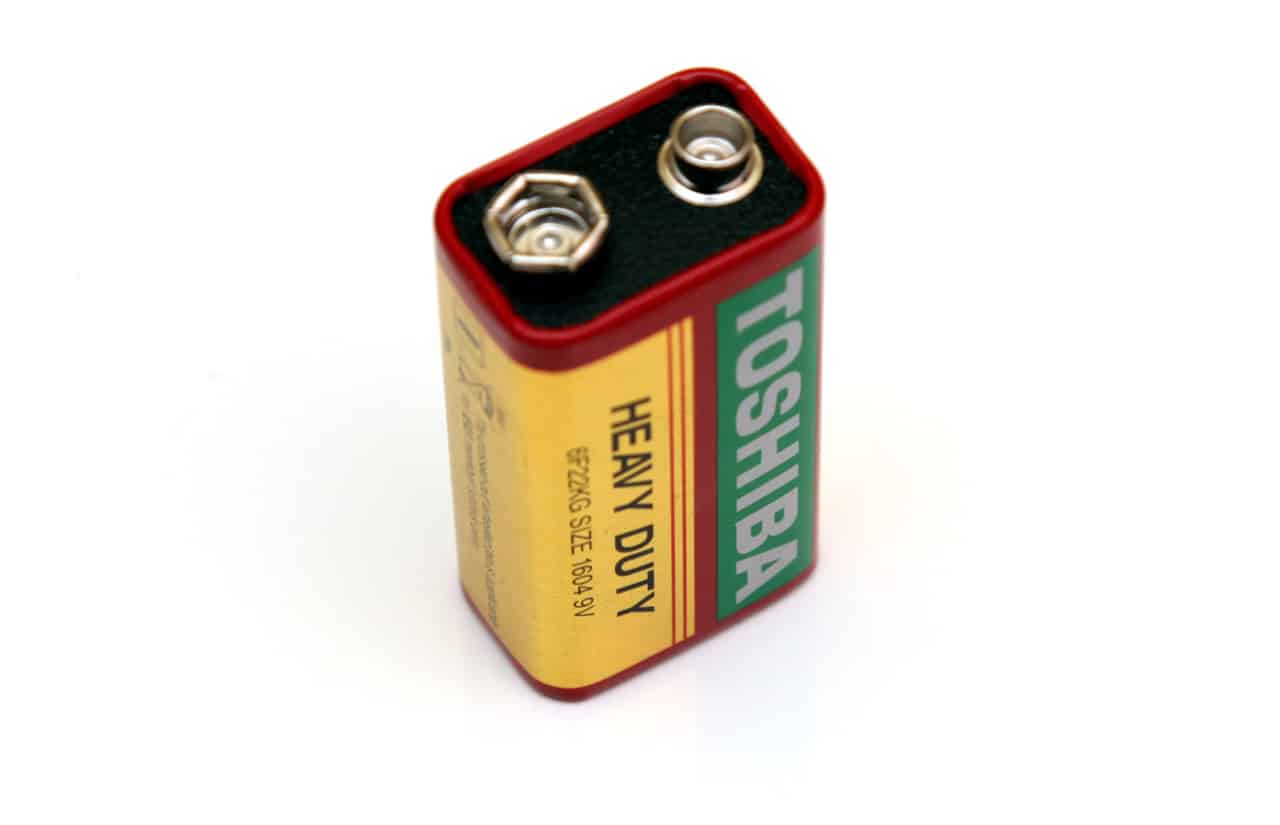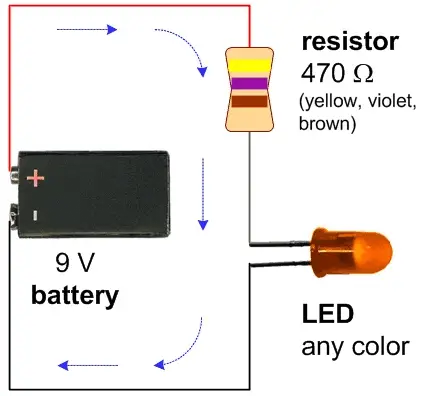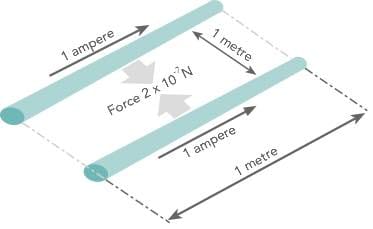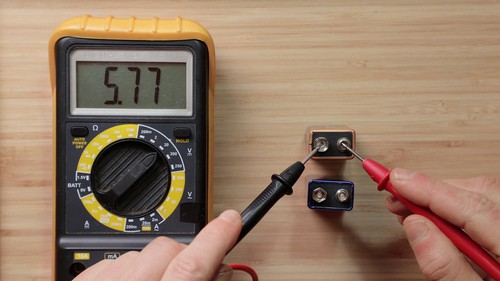If you use batteries, you need to know essential physics and electricity. So, let’s start with the essentials: volts, Amps, and battery capacity.
9V batteries are a type of rechargeable battery that can generate up to 500 milliamps of electricity for an hour before it dies. This makes them perfect for powering small devices like remote controls and flashlights, as they can provide enough power without breaking quickly. Additionally, 9V batteries come in various sizes and ratings, so you can easily find one that suits your needs. Whether you need a battery for everyday use or something more heavy-duty, there is sure to be a 9V battery that fits the bill. So, if you’re looking for a reliable power source for your gadgets and devices, check out 9V batteries!

Battery Voltage
Voltage is a measure of the energy given to electronic circuits. In most cases, circuits are electronic devices that require a certain amount of voltage to function correctly. For example, a device that operates at 12 volts will need a battery that supplies 12 volts to work correctly.
There are two main types of voltages: AC and DC. AC stands for alternating current, which refers to how the energy flows through the circuit. DC stands for direct current, meaning the energy flows in one direction only. Most electronic devices today use direct current, which is more efficient and less susceptible to voltage or power surge fluctuations.

Whether using an AC or DC voltage depends on the type of device you’re using and what you’re using it for. Generally speaking, most consumer electronics use standard DC voltages ranging from 5-12 volts, while more specialized equipment may require higher or lower voltages depending on its purpose and design. Understanding voltage is essential for anyone who works with electronics, and it is crucial to understand how it works and how different voltages affect your devices.
Battery Ampere
Ampere (often abbreviated a” “a”p”) is a unit of measurement used to describe how much electricity flows through a device per second. The higher the amperage, the more current flows through the device, thus the more significant electricity. Amperes are typically used to measure the power consumption of electrical appliances like motors, lights, and heaters.

It is helpful to think about water flowing through a pipe to understand how amperes work. As more water can flow through a larger pipe, more electricity can flow through a larger wire. This means that devices with high amperage requirements will need thicker wires to carry the necessary current without overheating or causing damage.
Although amperage is essential in determining how well a device operates, it is not the only consideration when choosing electrical equipment for your boat or other applications. Other factors, such as voltage and wattage, are essential in determining which appliances and equipment will suit your needs. With this knowledge, you can choose the right equipment for your application and ensure you have all the power you need for safe, reliable performance.
9V Battery Capacity or AMP hours (Ah)
Battery capacity represents the total amount of electricity generated due to electrochemical reactions in the battery and is expressed in ampere-hours. The capacity of 9-volt carbon-zinc batteries is 400mAh (milliamps), 550mAh for alkaline batteries, and 1200mAh for lithium batteries. If you have a nickel-metal hydride 9V battery, the capacity will be 175 to 300 mAh.
Battery capacity refers to how much power it can store and deliver over time. This is typically measured in Amp-hours, or Ah for short. The Ah rating tells you how many amps the battery can provide for a specific time. For example, if you have a 12V 90Ah battery, this means that the battery can deliver 90 amps for one hour.
To understand how this works in practicelet’s’s consider an example. If you have a 12V 50Ah battery and want to run a 25A motor for 4 hours, your battery will be able to do this because it has enough capacity to provide 25 amps per hour for 4 hours. So even though your battery may not be able to give you full power all the time, it still has plenty of capacity to supply your device with the power it needs when needed.
Ultimately, a battery’s capacity depends on several factors, including its chemistry type (such as lead-acid or lithium), construction quality, and age. To get the most out of your battery, you should always match it with a device that requires the same current for which it is rated. It would also help to recharge your battery regularly to stay in good condition over time.
How Many AMPs is a 9v Battery?
9V carbon-zinc batteries have 0.4 Amps, Alkaline 9V batteries have 0.6 AMPs, and Lithium 9V batteries have 1.2 AMPs.
The main disadvantage of 9V carbon-zinc batteries is their low energy density, meaning they cannot store as much energy as other types of batteries. This makes them less efficient for applications where a lot of power is needed for a short period. In addition, carbon-zinc batteries have poor leakage resistance, which means they can lose charge even if they are not being used. Finally, these batteries tend to experience a voltage drop with discharge, so their performance declines over time as the battery discharges. Despite these drawbacks, carbon-zinc batteries are still commonly used in applications where the high cost and environmental concerns associated with other types of batteries are not an issue.
Alkaline batteries are a popular choice for many users, as they offer a range of advantages over other types of batteries. These batteries are relatively inexpensive, durable, and reliable, making them an excellent choice for powering various electronics. Additionally, alkaline batteries have a long shelf life and can be recharged multiple times without experiencing significant degradation in performance. With all these benefitsit’s’s easy to see why many people choose alkaline batteries for everyday power.
Lithium 9V batteries are a popular choice for many electronics and devices due to their combination of safety, power, and functionality. Lithium-ion batteries offer smaller sizes and greater power output than other battery types, such as lead-acid batteries, making them ideal for use in portable electronics like cell phones and laptops.
In addition to these advantages, lithium 9V batteries stand up well to repeated charging and discharging without losing performance. They can be quickly charged when needed, and they support wireless charging technology, so they can be easily recharged without having to plug in a cable. Furthermore, these batteries have a low rate of self-discharge, meaning they hold their charge for more extended periods between uses.
Lithium 9V batteries are an excellent choice for powering a wide range of electronics and devices due to their safety, power, convenience, and functionality. Whether you need reliable performance in your smartphones or portable gaming devices or long-lasting power for your camping gear or outdoor equipment, lithium 9V batteries are sure to meet your needs.
How Many Milliamps In A 9 Volt Battery?
In 9 Volt carbon-zinc batteries, there are 400mAh (milliamps), 550mAh for alkaline batteries, and 1200mAh for lithium batteries. If you have a nickel metal hydride battery, there will be 175 to 300 mAh.
A 9-volt battery contains many milliamps, depending on the type of battery. Carbon-zinc batteries typically have 400 mAh, while alkaline batteries usually have 550 mAh. Lithium batteries tend to have the highest capacity, up to 1200 mAh. Other batteries, such as nickel metal hydride batteries, typically have between 175 and 300 mAh. Overall, the number of milliamps in a 9-volt battery will depend on the type of battery and its capacityWhat’s’s the difference between Amp Hour and Amperage in 9-volt batteries?
Amp hour and amperage are two different ways of measuring the performance of a 9-volt battery. At its core, amp hour refers to the energy a battery can store or supply over time. This is typically measured in terms of how many amps the battery can supply over 20 hours, with 100 amp hours representing a capacity of 5 amps per hour.
By contrast, amperage refers to the maximum energy a battery can provide at any moment. This is usually measured by how many amps a battery can deliver for short periods (such as when starting an engine).
So while amp hour and amperage are essential metrics for understanding the performance of a 9-volt battery, they measure different aspects of that performance. For example, if you need a lot of power to start your car in the morning, you might want to look for a high-amp rating in your 9-volt batteries. In contrast, if you store energy for long periods, you might look for batteries with higher amp-hour ratings instead.
How Many Watts In A 9 Volt Battery?
9V carbon-zinc batteries have 0.4 Amps, so when we multiply with 9V, they have 3.6 Watts. Amps (the amount of electricity) multiplied by volts (the pressure on the electricity) equals wattage, so Alkaline 9V batteries have 0.6 AMPs and 5.4 Watts, while Lithium 9V batteries have 1.2 AMPs and 10.8 Watts.
How Do You Check Amps On A 9 Volt Battery?
When checking the amp rating of a 9V battery, the first step is to use a multimeter. This tool allows you to measure the voltage and current of a circuit or device.
To check the amps on a 9-volt battery using a multimeter, start by connecting your multimeter to the battery. It would help if you connected the red probe to thbattery’s’s positive terminal and the black probe to its negative terminal. Once your multimeter is connected, turn on the DC function and make sure that your probes are firmly connected to the sockets. With your probes in place, you should get an accurate reading of how many amps are flowing through your 9-volt battery.

How many hours do 9 Volt batteries last?
One of the most common questions about 9V batteries is how long they can last. The answer depends on several factors, including the type of battery and how you use it.
Traditional alkaline 9V batteries generally can typically last 4 hours or more. Lithium batteries tend to be longer-lasting, lasting 10 hours or more, depending on the brand. There are also rechargeable 9V batteries available, which can last for several hours, depending on the type. Some lithium rechargeable batteries can last 10 hours or more, while others may only provide 4 hours of use.
So how do you choose a 9V battery that will last as long as possible? The best way is to consider a few key factors.
First, pay attention to the type of batteryou’rere using. Traditional alkaline batteries are less expensive and easier to find than other types, but the critical ways last as long as other 9V batteries. On the other hand, rechargeable lithium batteries are more expensive but often provide longer battery life.
Another critical factor is how and when you use your 9V battery. If you need your device for longer periods throughout the day or only infrequently use it at all, an alkaline battery might work well for you. However, suppose you need your device for longer periods throughout the day or frequently use it. Correct, a lithium battery might be a better option since it can provide power for extended periods without needing replacement as often.
Ultimately, choosing the correct 9V battery will depend on your specific needs and your daily use of your device. However, with careful consideration and researchit’s’s easy to find a battery that will work well for you and provide plenty of power when you need it most.
- Facebook Ads to Get Followers! - December 27, 2024
- ClickUp vs. Slack - December 20, 2024
- Mastering E-Commerce Analytics: A Blueprint for Success






